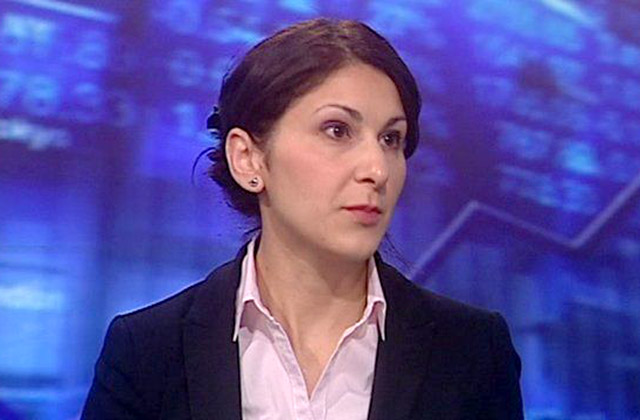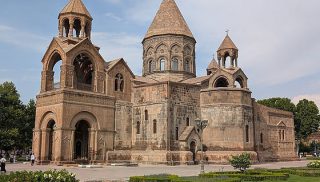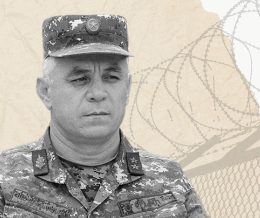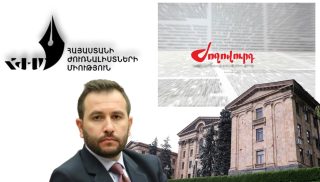
What is proposed by new RA Government is revolution from the top, however, it’s not clear how it’ll be implemented: Lilit Gevorgyan

168.am presents a part of the interview with Lilit Gevorgyan, Russia and CIS, Europe senior analyst at IHS Global Insight, covering domestic policy issues.
RA newly appointed PM Karen Karapetyan dismissed people from the Government, who are considered to be pillars of the Republican Party of Armenia (RPA), in particular, Gagik Beglaryan, Surik Khachatryan, Gagik Khachatryan and others. What do you think, in which context should these reforms be perceived? Should these be considered as real reforms?
In Armenia, like in other EEU member states, common changes are ongoing. New Governments are being developed, for instance, in Kazakhstan, Kyrgyzstan, or slow generation change is taking place in Russia, as a result of which more prominent representatives of the oligarchy gradually withdraw from the political leadership, of course, keeping their businesses.
Younger bureaucrats, developed in that very oligarchic system, substitute them. They are more loyal to the system. Moreover, they bear some ideology, as compared to oligarchs of earlier period, who were mainly striving to political levers to expand their businesses.
This new ideology is yet developing, however, main directions are already discernible: political stability for the sake of economic growth. Not accidentally, the model of Singapore is frequently brought, which, in my opinion, isn’t applicable in Armenia.
As a result of these reforms, redistribution of big businesses is possible as well, where survive only those, who are flexible from the perspective of adopting to a new situation and don’t pursue political purposes.
Reforms have two issues—reproduce current system, bringing new fervor and new faces more acceptable for the society. Secondly, attempt to confront low economic growth, deepening poverty and possible social shocks, which have lasted since 2008. This, of course, isn’t a systemic change, but cosmetic steps to include Western investors.
In the former Soviet space in case of systemic changes the impulse always came from the bottom. It has absolutely been accompanied with new political forces coming to power, when members of former regime not only lost their positions, but their property, and in certain cases they have been brought to responsibility. Finally, it’s worth remembering that weak economy and bribery are a result of bad political institute, i.e. these are political issues and not doing business.
Of course, any program by RA Government, promising fight against bribery and economic growth, is welcomed. More optimistic moods and intention not to criticize the new Government among some part of the society are clear as well. However, from the perspective of risk assessment, in particular, when Armenia attempts to bring foreign investors, only promise isn’t enough, and assessing new action plan by serious criticism is compulsory in doing investment, which is already being implemented.
This isn’t the first technocrat Government, developing in Armenia. It’s not clear which the differences between the action plans of Tigran Sargsyan and Karen Karapetyan are. Moreover, both have been developed under the control of the same president. It’s not clear either whether the Government will be provisional or not on account of the forthcoming elections.
What is promised by the new Government, basically, is revolution from the top. However, it’s not clear how it’ll be implemented. How will the oligarchs be eliminated, who not only have monopolies, but are located in the leadership’s pyramid? They may avoid taxes, which already mutilates competition. Will there be a judicial system to punish oligarchs fleeing from taxes? Crucial issue of economy and national security is diversification of energy resources, i.e. elimination of Armenia’s economic dependency on Gazprom. The new action plan by the Government doesn’t even enshrine it. Besides, high prices for Russian gas damage economic growth, which is more than the price for gas supplied to Ukraine. Reduction of state agencies and ministries are welcomed, however, it isn’t clear why Armenia with its strictly limited finances will continue keeping a large police force, which is considerably higher than citizen-policeman ratio defined by the UNO.
These days first Armenian president Levon Ter-Petrosyan set an alarm, stating, “While the regime is engaged in theatrical ceremonies of improving the government system and the electoral process, obviously directed not to the recovery of the state but to strengthening and perpetuating their own authority, real economic disaster, this time in disguise of sweet-sounding word “default”, threatens our country.” Do you agree with this assessment?
Default, i.e. non-payment of external state debt is recorded, when the state either doesn’t want to pay, or isn’t able to. I think Armenia will do its best to pay its growing debts and current tax on profit. Moreover, Armenia’s main debt is that of international organizations, in particular International Monetary Fund (IMF), debt of which should be repaid with no delay. This increases the risk of default for private investors, who have bought Armenian bonds, which happened to Ukraine in 2015.
In the period of forthcoming 12-18 months threat of default is big. However, long-term threat is higher. Currently pursuant assessments of three international rating companies: Moody’s, Standard & Poor’s and Fitch, Armenia’s rating is B+, i.e. “great possibility of non-payment” (generally, the best is AAA, and D is the worst). To compare, we may state that Azerbaijan has a better rating—BB+, i.e. “probable to pay.”
Moreover, this February Moody’s set Armenia’s rating in “negative future” category, which means rating of Armenian bonds may drop.
Possibility of default increases for a few reasons. Firstly, Armenia’s external debt is growing as compared to GDP. Armenia is the third among CIS member countries, after Ukraine and Kyrgyzstan. Let me remind, that Ukraine applied to default in 2015. Depreciation of Armenian dram (AMD) increases the burden of external debt. Upon our calculations, 22% of Armenia’s monetary income will be consumed on repayment of external debt and payment of interests in the period of 2016-18.
Risk of default increases, as Armenia failed to formulate a stronger miscellaneous economy to better confront external shocks. Moreover, Armenia’s exports are more, mostly metal and agricultural goods. This makes economy vulnerable, when world prices for metal drop, when there are unfavorable weather conditions. Moreover, as data of recent 10 years show, Armenia is becoming more dependent on Russia economically. 10 years ago that dependency, according to the statistics on Armenia’s external trade was even less. This means, that Russia’s unhealthy economic condition affects Armenia’s external incomes, thus, this also increases the risk of default.
However, the most bothering is Armenia’s strict dependency on transfers and their reduction. This reduction has two reasons—temporary and permanent. Transfers mainly come from Russia, where there is no economic growth yet, and in near future it’ll be weak, i.e. transfers will be restored to some extent. Bad news is that there is an immense flow of families from Armenia, as a result of which number of those doing transfers simply reduces.
Possibility of war and supposed expenditures also increase the risk, particularly, when newly appointed Armenian Defense Minister touches upon establishing “nation-army” or making military industry a stimuli for economy. For many external investors this may at least sound concerning. Moreover, Armenian authorities stated that the developments of July [activities of Sasna Tsrer armed group – A.M.] were wide-scale terror operation, which increased Armenia’s internal political risk, supposing that Armenia will maintain its immense expenditures to keep current number of the Police.
Finally, in the period of the forthcoming 5 years, risk of default increases, as it isn’t clear how Armenia will attract direct investments. In 2015 Armenian authorities and the public have chosen membership to EEU, which, perhaps contributed to increase of export in certain sectors, however, instead, flow of Western investments has decreased, and Russian investments aren’t significant.
Of course, there are many countries with external debt-GDP ratio, which have worse indices. For instance, Armenia’s external debt may be compared to that of Belgium, where debt reaches almost 100% of GDP. However, Belgium is considered a country with high rating, and if necessary, it may sell bonds in favorable conditions and reformulate its debt. That country has open, developed economy and institutes, and as we saw through recent years, it may function uninterrupted for months without federal government. All this lacks in case of Armenia.
Risk of Armenian default may sharply grow under new economic crisis or war. In both cases Armenia will face difficulties in selling bonds in international markets and reformulate its loans. Besides it, Armenia’s current economic model under continuous migration can’t provide a serious economic growth, that will allow to provide financing of both chronic shortage of external trade account and budget, as well as repayment of external debt. Risk of default is probable, which will increase Russia’s dependency, as the latter may propose financial assistance to Armenia. And that assistance, naturally, will have economic and political implications for Armenia.
By Araks Martirosyan























